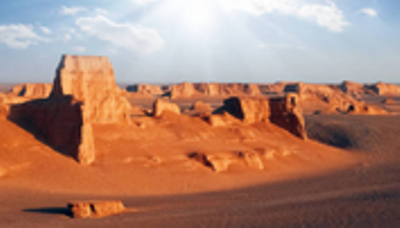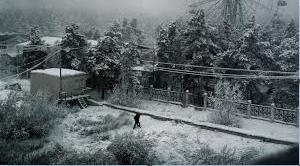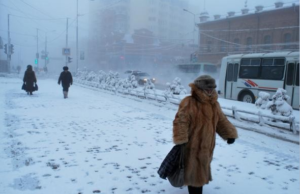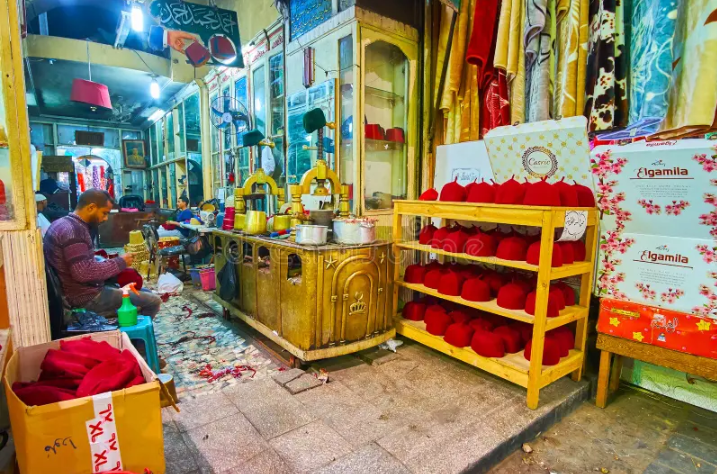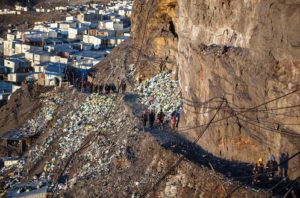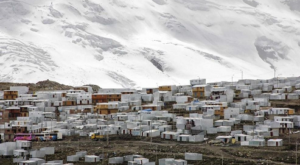The World’s Hottest Place, When we talk about the hottest place on Earth, most people might think of a sunny beach or a scorching desert. However, the true contenders for the title are far more extreme with temperatures. So high that they push the boundaries of human endurance. In this blog post. We explore the world’s hottest places using the PSA copywriting framework. We’ll identify the Problem of extreme heat look at how these places are adapting and finding a Solution. And suggest how you can take action if you want to visit or learn more about these incredible environments.
Problem: Understanding Extreme Heat

The rising global temperatures have made extreme heat an increasingly pressing issue. With the effects of climate change, many parts of the world are experiencing hotter summers than ever before. The hottest places on Earth are not just naturally extreme but are also affected by human activities. Such as deforestation and the burning of fossil fuels. which contributes to the greenhouse effect.
The main problems posed by extreme heat include:
- Health Risks: Prolonged exposure to high temperatures can lead to heat stroke dehydration and other serious health issues.
- Environmental Impact: Extreme heat can disrupt ecosystems leading to the loss of flora and fauna that are not adapted to such conditions.
- Economic Challenges: Agriculture tourism and other industries struggle to operate in areas with extreme temperatures leading to economic losses.
Solution: Adaptation and Resilience in the Hottest Places on Earth

The hottest regions of the planet have evolved in distinctive ways in spite of the difficulties. People, animals, and plants have developed strategies to survive and even thrive in these harsh environments. Let’s dive into the top contenders for the title of the world’s hottest place and see how life persists in these extreme conditions.
- Death Valley, California, USA: The Hottest Place on Record California’s Death Valley frequently ranks first on lists of the hottest places on Earth. In 1913, 134°F (56.7°C), the highest temperature ever recorded on Earth, was recorded in Death Valley.
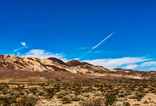
California’s Death Valley
- Why is Death Valley so hot? It’s a result of both its distinct climate and terrain. Death Valley is a desert basin surrounded by high mountain ranges, which trap heat. The valley’s floor is covered with salt flats that reflect the sun’s rays further intensifying the heat.
- How do people survive in Death Valley? Despite the harsh conditions, a small number of people live in Death Valley year-round. They have adapted by using cooling technologies wearing loose clothing and staying indoors during the hottest parts of the day. Tourists are advised to visit in the cooler months and to carry plenty of water if travelling in summer.
Death Valley is also home to unique wildlife, including the Desert Bighorn Sheep and the Sidewinder Rattlesnake both adapted to survive with minimal water.
-
Lut Desert, Iran: The Hottest Surface Temperature on Earth

The Lut Desert, or Dasht-e Lut, in Iran, holds the record for the hottest surface temperature ever measured. In 2005, satellite data recorded a ground temperature of 159.3°F (70.7°C), making it the hottest spot on Earth’s surface.
The Lut Desert is an expansive salt desert with dark volcanic rocks that absorb and radiate heat leading to extreme surface temperatures. It’s one of the most arid places on Earth with virtually no rainfall making it inhospitable for most forms of life.
However, recent explorations have found extremophiles tiny microorganisms that thrive in the harsh conditions of the Lut Desert. These resilient life forms are an example of how life can adapt even in the most unforgiving environments.
- Dallol, Ethiopia: The World’s Hottest Inhabited Place

The town of Dallol located in the Danakil Depression of Ethiopia is often cited as the hottest inhabited place on Earth. The average annual temperature in Dallol is 94°F (34.4°C), with summer temperatures frequently exceeding 113°F (45°C).
What makes Dallol unique is its stunning otherworldly landscape. The area is known for its geothermal activity with bubbling hot springs sulfuric acid pools and colourful salt formations. The Afar people one of the few groups that have evolved to survive in this hostile setting are also found in the Danakil Depression.
The Afar people are traditionally nomadic herders who rely on salt mining for their livelihood. They harvest salt from the ground and transport it using camels enduring the intense heat with remarkable resilience.
-
The Sahara Desert: The World’s Hottest Desert

The world’s largest scorching desert is the Sahara Desert which spans 11 North African nations. While it does not hold the record for the highest temperature. The Sahara frequently experiences temperatures above 120°F (49°C) during the summer months.
The Sahara is home to a diverse array of wildlife including the Fennec Fox known for its large ears that help dissipate heat. And the Dromedary Camel which can survive long periods without water. Humans have lived in the Sahara for thousands of years. With communities like the Tuareg adapting their lifestyles to the harsh desert conditions. The Tuareg wear loose long robes to protect themselves from the sun and are skilled navigators of the vast desert landscape.
-
Kuwait: The Hottest Temperature in Asia
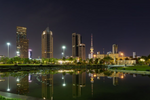
At 129.2°F (54°C) in 2016, it set the record for the hottest temperature ever recorded in Asia.
Kuwait’s extreme heat is largely due to its geographical location in the Arabian Peninsula combined with the effects of climate change and urbanization.
The capital, Kuwait City, is subject to severe heat waves, particularly during the summer. The extreme heat has prompted innovations in architecture and urban planning with buildings designed to minimize heat absorption and maximize cooling. Many public spaces are equipped with air-conditioned walkways to protect residents from the scorching temperatures.
The World’s Hottest Place, How You Can Experience
Visiting the hottest places on Earth is not for everyone but for adventurous travellers and researchers. These locations offer unique opportunities to experience some of the planet’s most extreme environments. Here’s how you can take action:
Step 1: Plan a Safe Visit
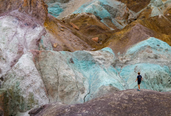
If you’re planning to visit one of these extreme hot spots, it’s essential to prioritize safety:
- Travel During Cooler Seasons: Aim to visit during the cooler months when temperatures are more bearable. For instance, go to Death Valley in the early spring or winter.
- Stay Hydrated: Extreme heat can quickly lead to dehydration. Always carry plenty of water and electrolyte supplements.
- Dress Appropriately: Wear loose light-coloured clothing that covers your skin to protect against sunburn and heat stroke.
- Hire a Local Guide: Especially in remote areas like the Lut Desert or Danakil Depression. A local guide can help navigate the terrain and provide valuable insights about the region.
Step 2: Explore Documentaries and Research
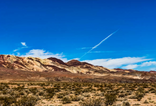
If you prefer to learn from the comfort of your home. There are numerous documentaries and research papers that explore the hottest places on Earth. Notable documentaries include “Death
Valley: The Hidden Secrets” and “Lut Desert: The Hottest Place on Earth” which offer fascinating insights into the unique geology and biodiversity of these regions.
Step 3: Support Climate Action Initiatives
The increasing temperatures in many parts of the world are a stark reminder of the impacts of climate change. You can take action by supporting climate initiatives and organizations working to mitigate global warming. This includes reducing your carbon footprint supporting renewable energy projects and spreading awareness about the effects of extreme heat.
Case Study: Climate Resilience in the Danakil Depression

The Danakil Depression in Ethiopia is a prime example of how communities can adapt to life in one of the hottest places on Earth. The Afar people have lived in this region for centuries despite temperatures that regularly exceed 113°F (45°C). Their traditional practices such as salt mining and camel herding are tailored to the extreme environment.
In recent years efforts have been made to introduce sustainable practices in the Danakil Depression. Projects focusing on solar-powered water pumps. And heat-resistant crop cultivation is helping the Afar people maintain their livelihoods. While reducing their vulnerability to climate change.
Conclusion: Why We Should Care About the Hottest Places on Earth
The hottest places on Earth are not just geographical anomalies. They are indicators of our planet’s changing climate. By understanding and exploring these extreme environments. We gain valuable insights into the resilience of nature and the impact of human activities. Whether you’re an adventure seeker a climate activist or simply curious about the world. Learning about these hot spots can inspire action and awareness.
Call to Action: Discover Learn, and Act
Are you ready to explore the extreme heat of our planet’s hottest places?
Whether you plan to visit or simply want to learn more take the first step today. Share this article with your friends and family to spread awareness. And join the movement to combat climate change and protect our Earth’s unique environments.
By delving into the world’s hottest places. We’re not just exploring extreme heat. We’re uncovering the resilience of life in the face of nature’s most challenging conditions. Let’s continue to learn adapt and take action for a sustainable future.
